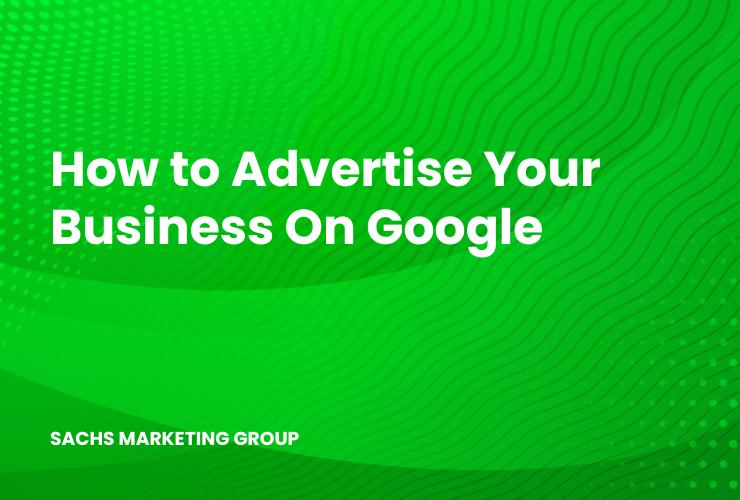Advertising on Google is a crucial step for businesses looking to enhance their online presence. It involves creating and running ads through Google Ads, Google’s online advertising platform. This allows businesses to reach a wider audience, target potential customers, and drive traffic to their websites.
In today’s digital age, making your business visible online is more important than ever. This may be more difficult to achieve than it once was for some businesses, depending on the competition. Fortunately, advertising provides a clear path forward to maximizing your visibility.
Advertising on Google offers an effective way to achieve this, ensuring your services or products are seen by those who need them most.
In this article, you will learn how to advertise your business on Google and maximize your visibility in Google Search.
Overview
How to Advertise Your Business On Google
In a world where digital footprints are crucial, not advertising your business on Google can leave you invisible in a sea of competitors.
Google Ads provides a platform to showcase your business right where your potential customers are searching. It’s an investment that boosts visibility, drives traffic, and fosters growth.
Effective advertising on Google aligns with customer searches, putting your business in the spotlight. Without it, you’re missing out on a vital channel of customer acquisition.
Here’s how to advertise your business on Google:
Create a Google Ads Account
Creating a Google Ads account is your first step towards advertising on Google. This account gives you access to a suite of tools and analytics, enabling you to create, optimize, and manage your PPC ads effectively. The process is user-friendly, and designed to guide you through each step. Here’s a step-by-step overview:
- Visit Google Ads Website: Navigate to the Google Ads homepage.
- Click on ‘Start Now’: Find and click the ‘Start now’ button.
- Sign In or Create a Google Account: Use an existing Google account or create a new one specifically for your business.
- Set Up Your Google Ads Account: After signing in, you’ll be prompted to set up your Google Ads account. This involves entering basic information about your business.
- Choose Your Campaign Goal: Select what you want to achieve with your ads, such as increasing website visits, getting more calls, or driving store visits.
- Define Your Audience: Specify who you want to reach with your ads, including their location and language.
- Create Your First Campaign: Follow the prompts to create your first ad. You’ll decide on the format and write your ad copy here.
- Set Your Budget: Determine how much you want to spend daily on your ads.
- Review and Launch: Review all the information, add your billing details, and launch your first campaign.
Remember, your Google Ads account is the control center for all your Google advertising activities. Take the time to familiarize yourself with the interface and the various features available.
Reviewing Your Competitor’s Ads
Reviewing your competitors’ ads is a crucial part of strategizing your own Google Ads campaigns.
By analyzing what others in your industry are doing, you can gain insights into effective keywords, ad copy styles, and offers that resonate with your target audience. Look for patterns in the types of ads they run, the features they highlight in their products or services, and how they address the audience’s needs or pain points.
Pay attention to their unique selling propositions and how they differentiate themselves from others. This analysis will help you identify gaps in their strategies that you can exploit and also inspire ideas to enhance your ads.
If you’re running an ecommerce website and want to create ads around your products, check out our guide on Google Ads for ecommerce.
Keyword Research and Selecting Targets and Negatives
Keyword research is the backbone of any successful Google Ads campaign.
It involves identifying the words and phrases that potential customers use when searching for products or services like yours.
Start by brainstorming a list of relevant keywords related to your business. Use tools like Google Keyword Planner for insights into the search volume and competition levels for these keywords.
When selecting target keywords, consider the intent behind the search queries. Are they informational, navigational, transactional, or commercial? This helps in tailoring your ad copy and landing pages accordingly.
Equally important is identifying negative keywords. These are terms for which you don’t want your ads to show up. Including negative keywords helps prevent your ads from being triggered by irrelevant searches, saving your budget for more qualified leads.
This strategic filtering enhances the overall efficiency of your Google Ads campaigns.
Set a Goal for Your Campaign
Setting a clear goal for your Google Ads campaign is essential for its success.
This goal serves as a guiding star for all your advertising decisions and helps in measuring the effectiveness of your campaign.
Goals can vary depending on your business needs. They might include increasing website traffic, generating leads, boosting sales, or enhancing brand awareness.
When setting your goal, ensure it is specific, measurable, achievable, relevant, and time-bound (SMART).
For instance, if your goal is to increase sales, specify by how much and in what timeframe. This clarity allows you to tailor your campaign settings, such as target audience, keywords, and ad copy, to align with your objectives. It also provides a clear metric for success, enabling you to evaluate the campaign’s performance and make informed adjustments to improve results.
Remember, a well-defined goal is the foundation upon which effective ad campaigns are built.
Set Your Google Ads Budget
Determining your Google Ads budget is a crucial step in your campaign planning. This budget should align with your marketing goals and the financial resources of your business.
Start by considering the cost-per-click (CPC) in your industry and how competitive the keywords you’re targeting are. Then, decide on a daily budget that you’re comfortable spending.
This can be a modest amount if you’re new to Google Ads or more significant if you’re aiming for aggressive marketing. Remember, Google Ads operates on a pay-per-click (PPC) model, meaning you only pay when someone clicks on your ad. It’s important to regularly monitor your campaign’s performance to ensure the ROI of your PPC ads is positive.
If certain keywords or ads are too expensive or do not yield the desired results, adjust your strategy accordingly. The flexibility of Google Ads allows you to modify your budget at any time, giving you control over your advertising spend.
Establish Your Advertising Region
Establishing your advertising region is a critical step in targeting your Google Ads effectively.
This decision should be based on where your potential customers are located and where your business can serve them. If you have a local business, like a restaurant or a retail store, you would typically target ads to the geographical area around your location.
On the other hand, if your business is online or has a broader service range, your target region might be much wider, possibly national or even international. Consider factors like language, cultural nuances, and local preferences when targeting different regions.
Google Ads allows you to get very specific with location targeting, enabling you to include or exclude particular cities, regions, or even radius targeting around a specific point.
This geotargeting ensures that your ads are shown only to the most relevant audience, making your ad spend more efficient and increasing the likelihood of reaching customers who are most likely to engage with your business.
Add Payment Information and Run Your Ad
Before launching your Google Ads campaign, you need to add your payment information.
This step is crucial as it activates your account, allowing your ads to go live. Navigate to the billing section of your Google Ads account and choose a payment method that works best for you. Google Ads typically offers various options, including credit or debit cards and bank account transfers. Ensure the payment details are accurate to avoid any interruptions in your ad campaigns.
After adding your payment details, it’s time to run your ad. Double-check all the settings, including your budget, target audience, chosen keywords, and ad copy to ensure they align with your campaign goals. Once satisfied, set your campaign live. This moment marks the beginning of your journey in Google advertising, where your business starts to reach a wider, more targeted audience.
Monitor the initial performance closely, as the first few days can provide valuable insights for immediate optimizations.
Track Progress and Collect Data
Tracking progress and collecting data is essential in understanding the effectiveness of your Google Ads campaign. Google Ads provides a wealth of data, including metrics like click-through rate (CTR), conversion rate, cost-per-click (CPC), and overall campaign costs. Regularly monitoring these metrics helps you gauge whether your campaign is meeting its goals.
Analyzing this data allows you to understand your audience’s behavior and preferences. You can see which ads are performing well, which keywords are driving traffic, and which demographics are most responsive to your ads.
This continuous collection and analysis of data are key to making informed decisions about your campaign. It also helps in identifying trends, optimizing ad spend, and improving overall campaign performance. Remember, data is not just numbers; it’s insights into your campaign’s health and opportunities for growth.
Make Changes Based on What’s Working
Successful Google Ads campaigns are not set-and-forget; they require ongoing optimization.
As you track your campaign’s progress and collect data, it’s important to make changes based on what’s working. Analyze which ads are getting the most clicks and conversions, and try to understand why. Is it the ad copy, the keywords, or the targeting that’s driving success?
Use these insights to refine your campaign. This could mean adjusting your bid strategy, reallocating your budget to more successful ads, tweaking your ad copy, or refining your targeting criteria.
Testing different variations of your ads can also provide valuable insights into what resonates best with your audience. The goal is to continuously improve your campaign’s performance by focusing on the elements that yield the best results. Remember, digital marketing is dynamic, and what works today may not work tomorrow, so stay flexible and ready to adapt.
Hire A Google Ads Specialist
If managing Google Ads seems overwhelming or if you’re not seeing the desired results, consider hiring a Google Ads specialist.
A Google Ads specialist can conduct in-depth keyword research, create compelling ad copy, optimize bidding strategies, and continuously refine your campaigns for better performance.
They stay updated with the latest trends and changes in Google Ads, ensuring your campaigns remain competitive.
Furthermore, they can provide detailed reporting and insights, helping you understand the return on investment (ROI) of your campaigns. For businesses looking to maximize their Google Ads potential without dedicating extensive internal resources, partnering with a Google Ads specialist can be a valuable and profitable decision.
Need Help Running Google Ads?
Looking to maximize your Google Ads results? Sachs Marketing Group is here to help.
With over a decade of experience in PPC management services for Google Ads, we have the expertise to elevate your campaigns. Our team understands the intricacies of Google Ads and can tailor strategies to meet your unique business needs. Let us help you navigate the complexities of online advertising and drive meaningful results.
Contact Sachs Marketing Group today for a partnership that turns clicks into customers.
Conclusion
Advertising your business on Google is a strategic move in the digital marketing arena. It’s about placing your brand in front of the right audience at the right time.
With careful planning, targeted strategies, and continuous optimization, Google Ads can be a powerful tool in your marketing arsenal. Whether you choose to manage it yourself or partner with specialists like Sachs Marketing Group, harnessing the power of Google can help you maximize your visibility and help grow your business.
Contact us today to get the conversation started!












